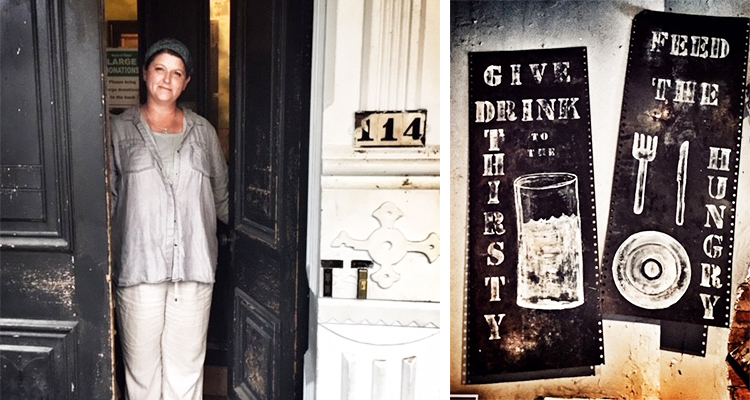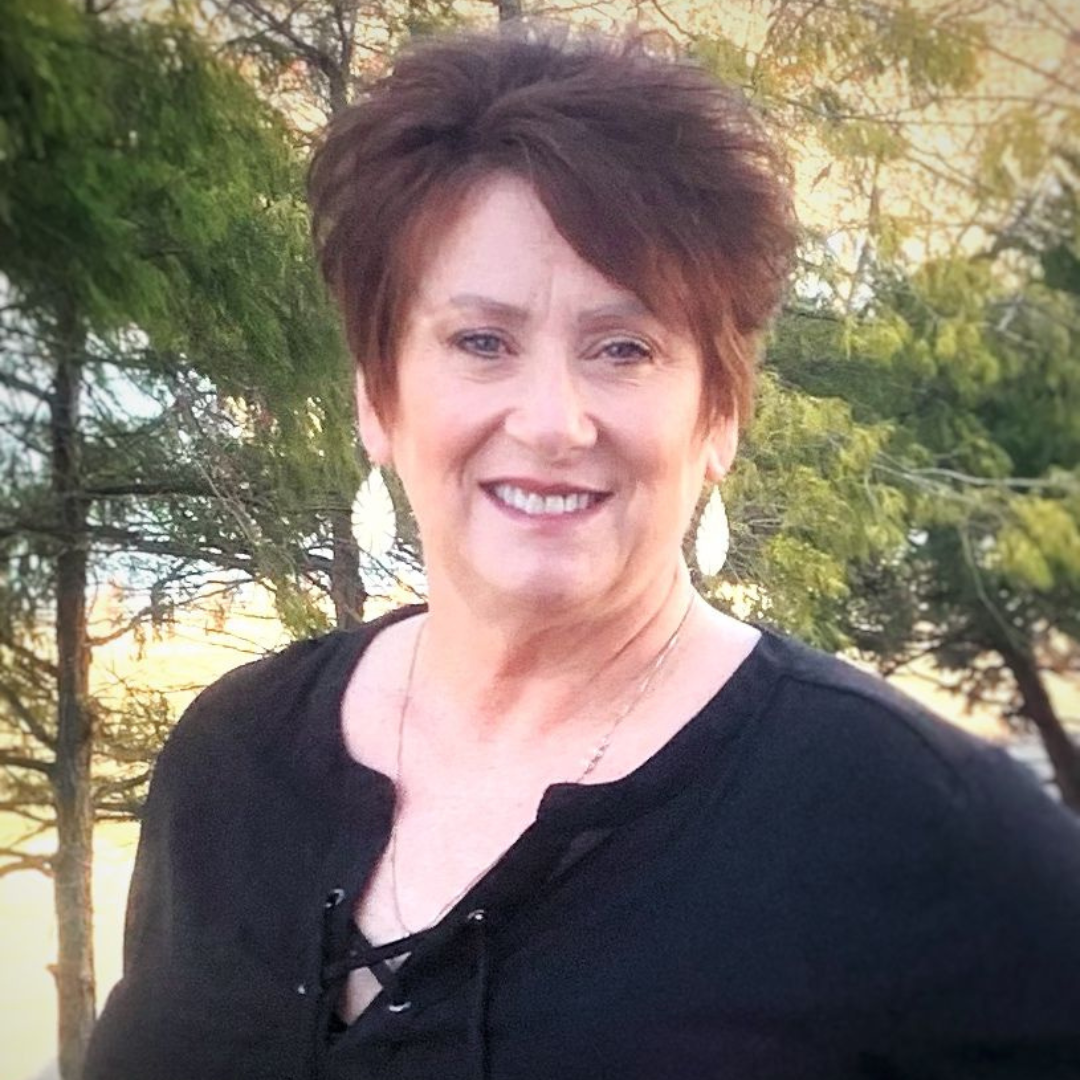“I call them ‘transients,’ but you call them ‘friends.’ And we’re talking about the same people.”
Kate Marshall, who operates the House of Hagar-Catholic Worker in East Wheeling, heard these words recently from someone who had concerns about the ministry she performs day-in and day-out at her home.
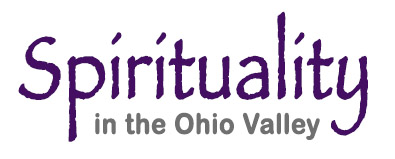 Kate counts among her “friends” anyone in need of food or fellowship. Those friends include youth aging out of the foster care system, people with substance use disorders, single moms and homeless families. Anyone who struggles in any way is welcome to join Kate’s family around their supper table for a meal. Because many of her guests do wrestle with their own personal demons, not everyone in the neighborhood appreciates the work she’s doing.
Kate counts among her “friends” anyone in need of food or fellowship. Those friends include youth aging out of the foster care system, people with substance use disorders, single moms and homeless families. Anyone who struggles in any way is welcome to join Kate’s family around their supper table for a meal. Because many of her guests do wrestle with their own personal demons, not everyone in the neighborhood appreciates the work she’s doing.
However, she addresses those who would criticize her work by quoting Matthew 25, verses 35 to 40 — “For I was hungry and you gave me something to eat, I was thirsty and you gave me something to drink, I was a stranger and you invited me in. … Truly I tell you, whatever you did for one of the least of these brothers and sisters of mine, you did for me.”
These verses are the basis of the Catholic Worker movement and the mission of House of Hagar.
Kate relayed a touching story about the first time she opened her 14th Street home and welcomed new friends for coffee. According to Kate, that first group arrived on a winter’s night and huddled on her porch, thoroughly bewildered by the fact that she was literally inviting them into her house. “You mean you’re inviting us to come inside?” one man asked. He grew misty-eyed and told Kate it had been many, many years since anyone felt he was worthy of being invited inside their home. But Kate believes that the more we push people away and exclude them, the bigger their problems become. And so, yes — she invites them through her front door and into her warm, welcoming home.
“Prayer in action is love, and love in action is service,” says Kate.
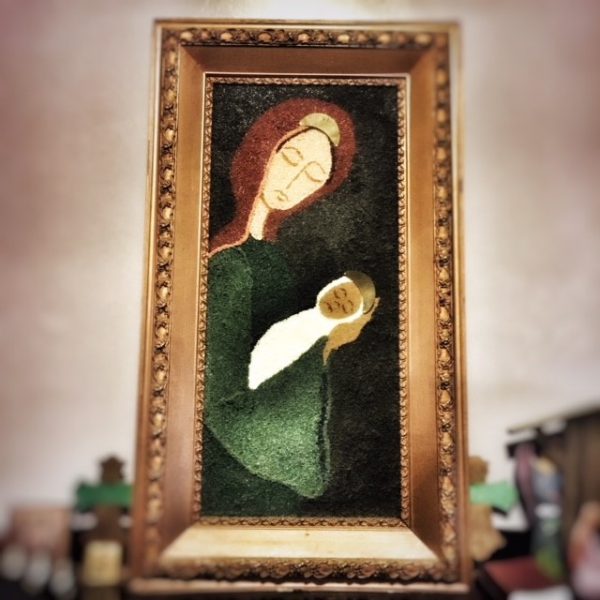
Long before the late Anthony Bourdain touted the virtues of creating relationships over a shared meal, the Catholic Worker movement was establishing homes that were places of true charity. The ministry was founded in New York, N.Y., by journalist and social activist Dorothy Day during the Depression. In 1932, Day 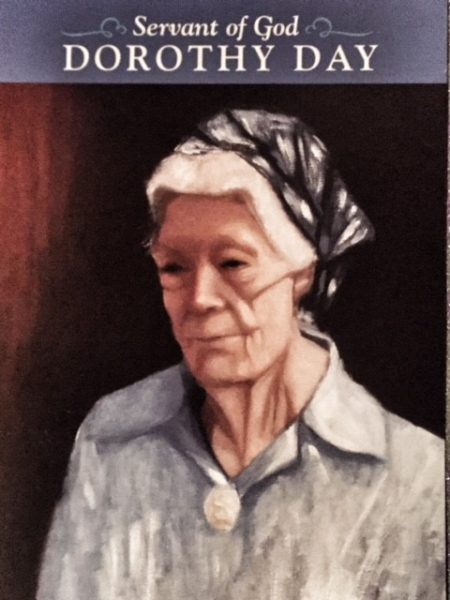 and fellow activist Peter Maurin established a pacifist movement combining direct care to the poor with non-violent action on their behalf. On May 1, 1933, the pair published the first Catholic Worker newspaper that featured advocacy journalism and cost a penny an issue. The paper is still in print some 85 years later and remains priced at only one cent per copy.
and fellow activist Peter Maurin established a pacifist movement combining direct care to the poor with non-violent action on their behalf. On May 1, 1933, the pair published the first Catholic Worker newspaper that featured advocacy journalism and cost a penny an issue. The paper is still in print some 85 years later and remains priced at only one cent per copy.
That newspaper and its exploration of social issues, particularly those affecting women and people of color, led to the establishment of the first non-religious soup kitchen serving those living on New York’s Lower East Side.
Eventually, that single soup kitchen grew into the current-day concept of Catholic Worker Houses. Kate’s is among about 300 such houses around the world and one of three in the state of West Virginia. Each House lives by the philosophy that whenever someone arrives there seeking assistance, he or she will be treated as if Christ himself had knocked at the door. In fact, each House is encouraged to have a “Christ Room” available to house overnight guests in need of more than a mere meal. Catholic Workers vow to abide by the Corporal and Spiritual Works of Mercy, which are ways of caring for the material and spiritual needs of others. Corporal Works of Mercy include feeding the hungry, clothing the naked and sheltering the homeless. Spiritual Works of Mercy include forgiveness, prayer and patience.
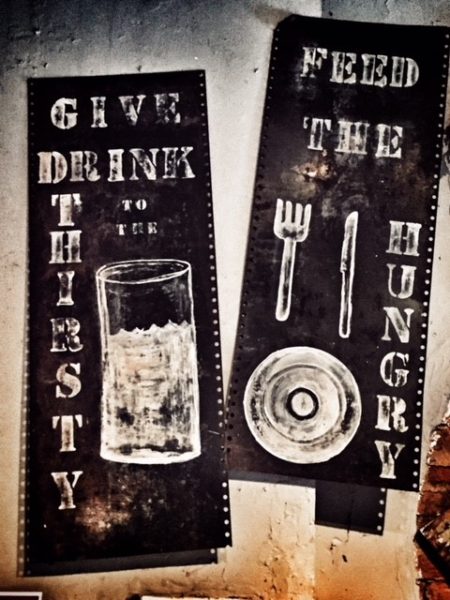
Catholic Workers believe in helping others through relationships, not sterile institutions. “We are only healed through community with each other,” Kate says. Though it can take some time for these relationships to grow, the results are worth the investment. Kate and the Catholic Workers who assist her help their friends learn new social and personal skills that will equip them for life outside the House. Other Workers often join the House after spending time there on college service trips. Such is the case with Nic Cochran, Adam Giglio and Vincent DeGeorge, who currently serve with Kate at the House of Hagar. “We attempt to create a place where it’s easier to be good,” Kate stated.
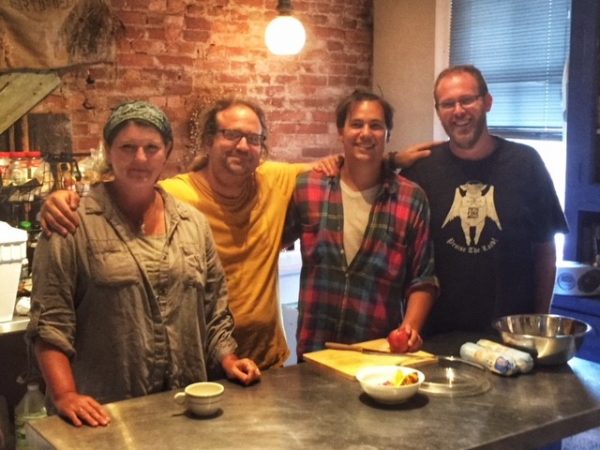
Anthony Bourdain also said, “You learn a lot about someone when you share a meal together.” Kate agrees. “Many miracles have happened around our table,” she says. One of the biggest, Kate explains, is that people of all ages, races and creeds learn the values of respect and tolerance of others who may be different than they are. “We are a hodgepodge of what love has brought together — a family blended together by God’s grace and mercy,” Kate shares on the House of Hagar website. During a recent visit to the House, more than one person hugged “Miss Kate” and expressed how much they loved her — a mighty testament to the fact that she has, indeed, stitched together a beautiful tapestry of family.
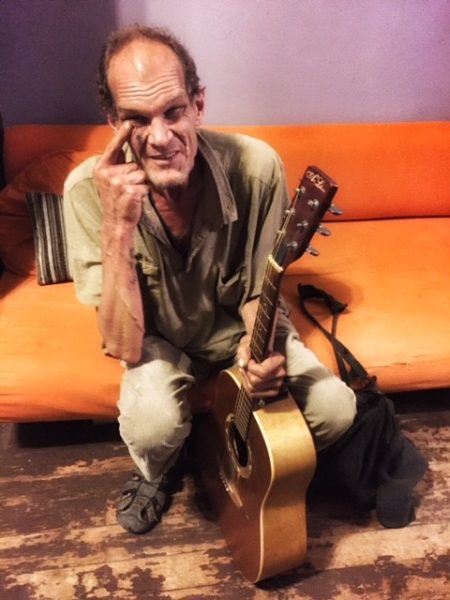
Kate is sometimes asked why Wheeling’s Catholic Worker House is named after a rock star or a comic strip. It’s not, she assures those who inquire. House of Hagar is named after the Egyptian slave of the Biblical matriarch Sarah and her husband Abraham. God had promised this geriatric couple a child. But they grew tired of waiting for their baby to arrive and decided to take matters into their own hands. Sarah offered Hagar to her husband to impregnate, with the intention of raising the baby as her own. This story, which can be read in its entirety in the book of Genesis, chapters 12- 21, illustrates the social injustice of slavery of that era and the accepted consequences of that slavery. Hagar’s life, Kate says, is both “layered with wretched inhumanity and lit with Divine intervention.” As Kate describes it on the House’s website, “We can only imagine the emotions Hagar was going through as a pregnant slave. Not only was she probably tired from the hormonal changes within her body, and the hard work she was probably still forced to do, but the baby put inside her without her consent would be called Sarah’s child, without Hagar’s consent.” Neither Sarah nor Abraham considered Hagar’s feelings when hatching their plan. Tensions grew between Sarah and her slave, and Sarah became angry and beat the pregnant Hagar, who fled into the wilderness. At her darkest hour, Hagar, the slave whose feelings no one considered, heard God call her by name and invite her into His favor. He asked Hagar, “Where have you come from and where are you going?” Modern-day Catholic Workers still use that question for personal reflection and also ask the guests who visit to contemplate where they have come from and where they want to go.
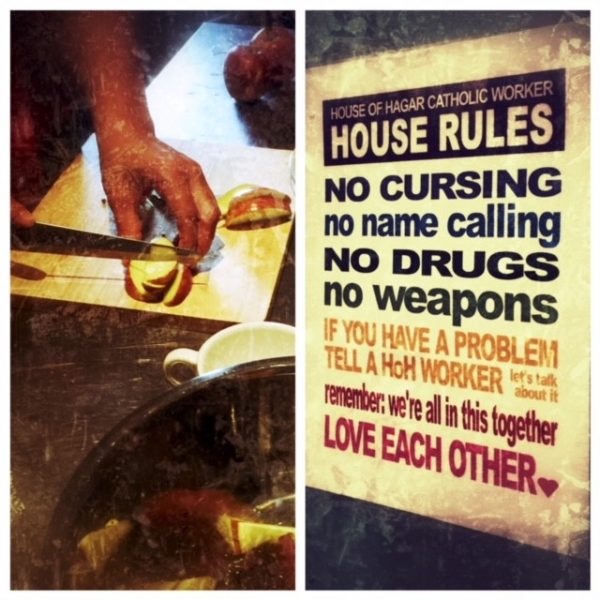
Where did Kate come from? The answer is Arizona, where she and her siblings were raised by loving Christian parents. Although she did not embrace their Protestant theology, she learned a great deal from her parents’ examples of love. Kate’s lifelong passions are art, gardening and children. She is able to combine all of her interests for the benefit of her friends at House of Hagar. Kate says that Peter Maurin, co-founder of the Catholic Worker movement, believed that growing things and spending time in nature were healing to the soul. It is evident that Kate shares Peter’s belief, as she spends her time away from the House working for Grow Ohio Valley. All of her salary is used to support the House and its mission. What she can’t provide, Kate says, God takes care of by sending donations through generous supporters, often just when they are needed most.
Kate enjoys sharing her passions with her friends, and knows that both gardening and art can be therapeutic for her guests. All are invited to join her in the garden, growing the food that they will later cook and share together. There are also regular art sessions, as Kate feels that art is not only healing but also a form of prayer and community-building. The group often designs “social justice art” and sometimes collaborates with local prisoners to create larger works. In fact, House of Hagar recently was awarded one of only 15 or so Burning Man Global Arts grants to fund an interactive show of this artwork titled “Inside Out.” They are in the process of securing a downtown location for the show, which they plan to open later this fall.
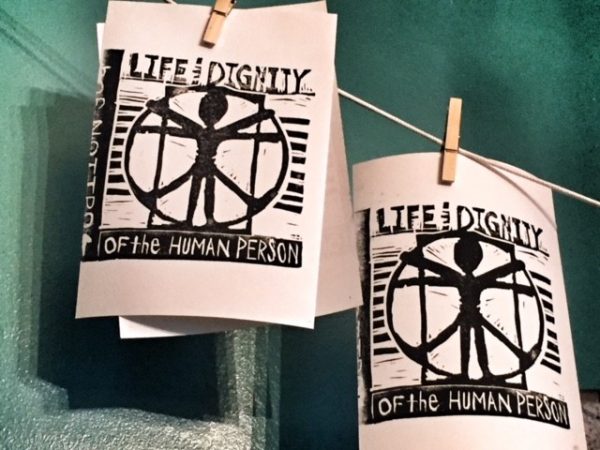
In addition to art and gardening, House of Hagar also helps to operate The Fun-Raiser van, which is a mobile urban playground that makes several weekly stops in Ohio and Marshall Counties. The Fun-Raiser gives local children the chance to relax and play in a safe and secure place. Play is the work of childhood — it is known to enhance intellectual, physical and emotional growth. Often, children living inside city limits don’t have many opportunities to run freely and engage in physical activities. The Fun-Raiser gives kids a chance to learn to use a hula-hoop, build a blanket fort and run through a sprinkler. There are also “Fun Experts” who come to the play sessions to teach the children music, art, yoga and other forms of self-expression.
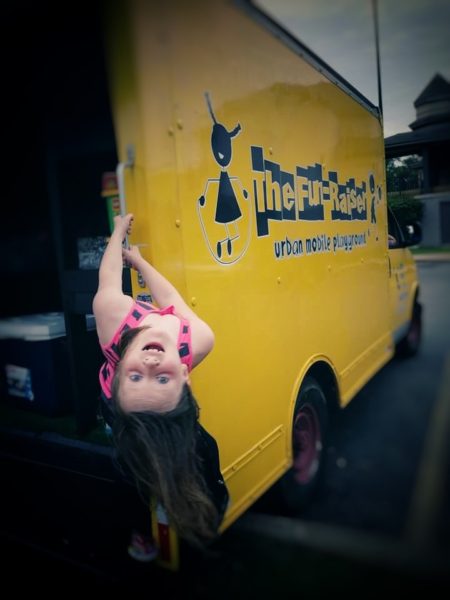
Kate says sharing her home and her heart with a constant stream of guests is not only a calling but “a lifestyle.” It’s clear that her heart is filled with love and mercy; for so many, she is an Earthly angel in a headscarf. Kate is truly able to find Jesus in the eyes of every person who walks through her door, as she knows that none of us will never look into the eyes of someone that God doesn’t love.
If you’d like to contribute to the House of Hagar, they welcome the following donations: Coffee, tea, hot chocolate; toilet paper, toiletries, feminine hygiene products; laundry detergent and dryer sheets; dog and cat food; adult-sized underwear, socks and bras. Also needed are new or gently used jeans, work boots and black, non-slip kitchen shoes, which help their friends to find employment. Bus passes and new or used bicycles also are needed. Donations can be dropped off at 114 14th Street, Wheeling. One of Kate’s scores of friends will be waiting at the door to greet you.
• A lifelong Wheeling resident, Ellen Brafford McCroskey is a proud graduate of Wheeling Park High School and the former Wheeling Jesuit College. By day, she works for an international law firm; by night, (and often on her lunch breaks and weekends) she enjoys moonlighting as a part-time writer. Please note that the views expressed in her writing are solely her own and do not necessarily reflect those of anyone else, including her full-time employer. Through her writing, Ellen aims to enlighten others on causes close to her heart, particularly addiction, recovery and equal rights. She and her husband Doug reside in Warwood with their clowder of rescued cats, each of whom is a direct consequence of his job as the Ohio County Dog Warden. Their family includes four adult children, their spouses and several grandkids.


